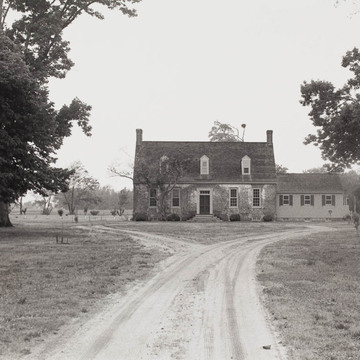Abandoned after disestablishment, this church was restored to use in 1819. Originally over 90 feet in length, the church was shortened in 1850 by about 20 feet because the west wall had deteriorated. The brickwork and especially the arches and keystones illuminate the talent of the builders. Although it appears isolated, the church served as the center of a small settlement. Across the field to the west can be glimpsed Chatham (1818), a substantial brick house. East 1.4 miles on Virginia 622 is Hungar's Glebe (c. 1745), the former rectory, whose date is controversial but which, in spite of a claim to c. 1643, probably dates from c. 1745. A nice example of a single-story, three-bay brick dwelling with glazed headers, it has an evocative setting on the marshes.
You are here
Hungar's Episcopal Church and Glebe
1742–1751, 1850. Church Neck Rd. (VA 619), Bridgetown vicinity (west 1 mile from U.S. 13, north 2.7 miles on VA 622 [Glebe Rd.]; right on VA 619, 1 mile). Marked with a sign
If SAH Archipedia has been useful to you, please consider supporting it.
SAH Archipedia tells the story of the United States through its buildings, landscapes, and cities. This freely available resource empowers the public with authoritative knowledge that deepens their understanding and appreciation of the built environment. But the Society of Architectural Historians, which created SAH Archipedia with University of Virginia Press, needs your support to maintain the high-caliber research, writing, photography, cartography, editing, design, and programming that make SAH Archipedia a trusted online resource available to all who value the history of place, heritage tourism, and learning.

